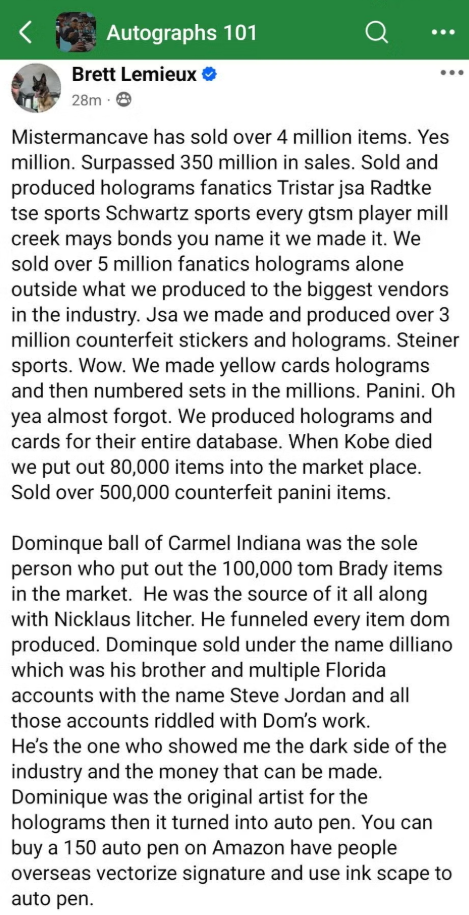In a dramatic and alarming twist that has left the world of sports memorabilia reeling, Brett Lemieux, a familiar name in autograph dealing circles, was identified as the linchpin of a sprawling counterfeit scheme during a law enforcement operation in Westfield, Indiana. Shockingly, Lemieux was found dead, reportedly from a self-inflicted gunshot wound, as police stormed his premises under a search warrant. This grim scene punctuated an otherwise routine raid, which quickly morphed into a scandal of epic proportions.
For those unacquainted with the mechanics of this niche market, Lemieux operated a business titled Mister Mancave, which boasted of possessing the largest framed jersey inventory on the web, albeit without any physical store presence. While his purported headquarters were listed in Columbus, Ohio, the operation was registered in Indiana, where it cleverly eluded full detection until now. The authenticity of Lemieux’s inventory—stuffed with autographs of legends, some of whom hadn’t signed memorabilia in years—fell under scrutiny following his alleged confession via a post in the “Autographs 101” Facebook group. This post has since plucked the veil off what practitioners had believed to be a thriving memorabilia trade.
Imagine the upheaval when it was revealed that more than four million fake items had saturated the market, translating into a staggering $350 million in purported sales. The figures, although grandiose and queried as implausible by some industry insiders (“impossible” was the blunt label used by one market competitor), point to a fraud of monumental scale. Steve Grad, an esteemed voice in autograph verification, indicated that the surge in sophisticated forgery methods such as autopens has only exacerbated efforts to verify authenticity, predicting a lasting impact on how such memorabilia will be collected and valued.
The sophistication of Lemieux’s operation lay not merely in manufacturing fake autographs but in forging the hologram stickers of major authentication companies like Panini, Fanatics, and Tri-Star. Such measures ensured that the counterfeit items walked among genuine artifacts, evading even the steely gaze of enthusiasts and veteran collectors alike. Take, for instance, an Aaron Judge-signed baseball with a Fanatics hologram offered for $399—a seemingly fair price given that an authentic version commands $699. Aita unauthentibrings disd his case,the icon of ruffering hisuqes pow fans into epast,
Fed up with the damage inflicted by shadowy operations like Lemieux’s, companies like Fanatics have spent millions upgrading hologram technologies, liaising with fraud detection experts, including retired FBI agents, to better safeguard the sanctity of their collectibles. But the situation is far from resolved. The names of other dealers—Dominique Ball of Indiana and Nickolas Litscher of Wisconsin as alleged associates—have surfaced, though both vehemently deny involvement, with Litscher, especially, promising legal recourse to clear his name.
As the industry braces for uncertainty, the community of collectors is left to ponder the solidity of their collections. Even for experienced dealers, the saga is a tumultuous chapter, pressed with doubts over their stock’s genuineness. Remember Kobe, a name burned into the annals of basketball lore? Lemieux claimed to have inserted 80,000 fake Bryant items into the marketplace following his tragic death, an affront to the memory of a beloved icon and a stark indication of the mindlessness motivating his operation.
Authorities maintain that Lemieux operated under aliases such as Ultimate Sports, Athletes One, and Signature Dog, utilizing these monikers to peddle unauthenticated wares across the internet. Now, as law enforcement combs through a tangled skein of fraudulent threads, the sports collectibles market stares into the void of possibly altered history, clutching at the few intact strands of trust and transparency left.
The arrests and seizures ignite not only a quest for accountability but serve as a critical folklore for the memorabilia industry, propelling it towards an era where discernment and diligence are non-negotiable. In an age inundated with digital deception, the scandal rings a clarion call for renewed vigilance; after all, each cherished item within a collection is a piece of history, fraught with the stories and sweat of its time—a truth far more precious than any etched signature on a counterfeit block of wood.
